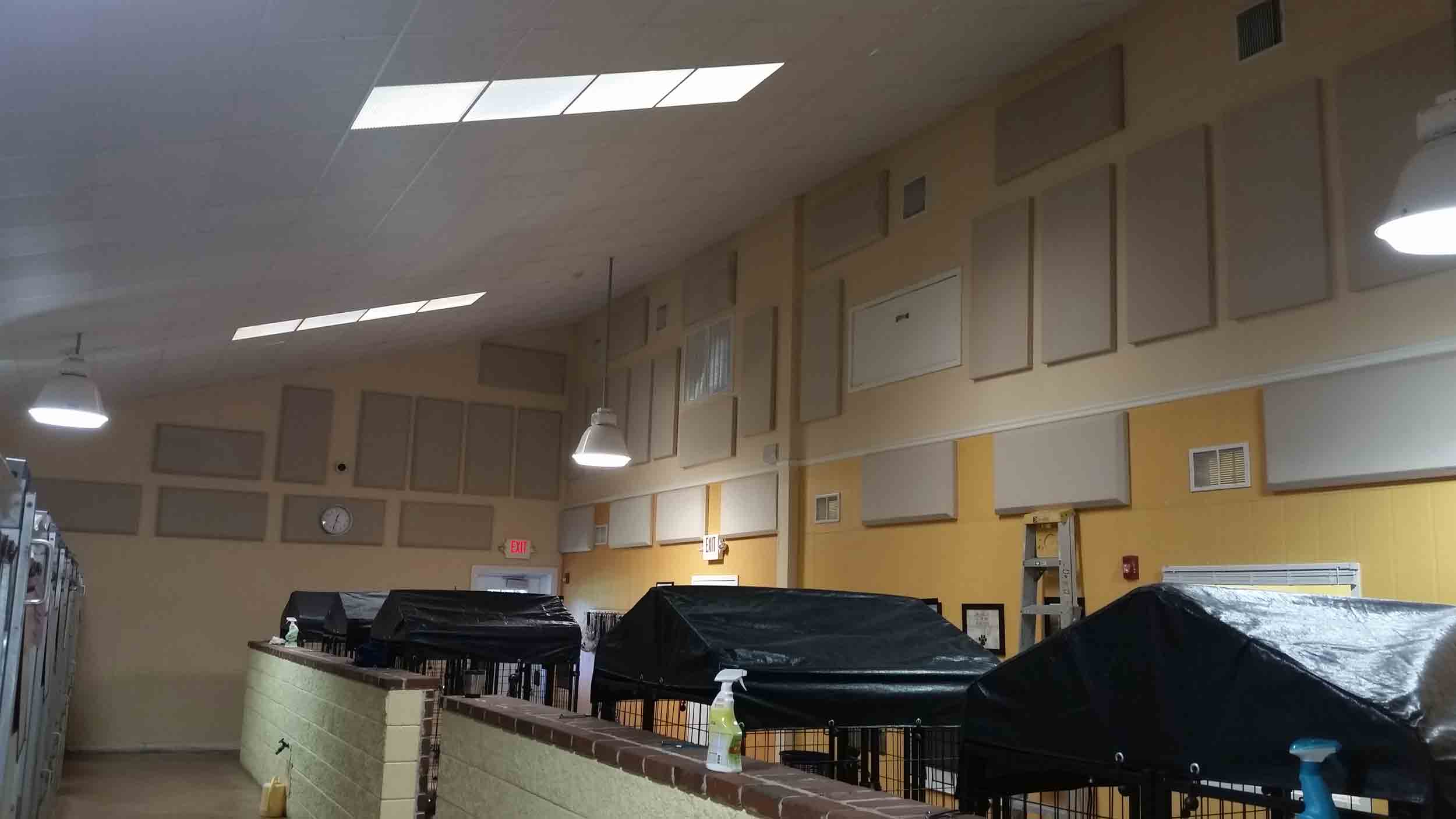Primacoustic Helps Take the Bite Out of the Bark at a Florida Animal Shelter

When it comes to animal welfare, the efforts of staff, volunteers, and donors means countless dogs, cats, and other (primarily) domesticated animals are saved from homelessness and given the chance of adoption into a loving home. Despite best intentions, shelter animals often suffer from anxiety, and this is accompanied by behavioral issues that present challenges to placing them. An obvious and easily remedied cause of their anxiety, often overlooked, is the persistent high-volume levels in these facilities.
By necessity, most shelters either occupy a space that was not initially designed for use as a shelter or one that is purpose-built but with the bare bones basics adhered to in favor of directing funds to the actual care of the animals. These well-meaning decisions are, in fact, counterproductive and inadvertently the cause of more health issues and stress to not only the animals, but to the staff, volunteers, and potentially to those visiting the shelter in search of their next pet.
Vancouver based acoustics treatment company, Primacoustic, has been providing solutions to help mitigate the intense sound pressure levels in shelters and kennels for several years. Primacoustic's Steve Dickson said: "More often than not, these shelters are built to withstand the wear and tear of consistently high occupation levels and turnover while also being convenient to keep clean and disease free. This frequently means the use of concrete floors and similarly structured walls. This is a recipe for an auditory nightmare. If you ask someone to describe their perception of visiting an animal shelter, you can be quite certain most will remark on the noise levels above anything else. And this is not just an uncomfortable reality, it's a health issue."
The sound pressure levels in kennel environments can be anywhere between 100dB and 118dB and it is well documented that sustained exposure to excessive sound pressure has a profound physiological and psychological effect on animals — human, canine, and feline, but canine in particular. Dogs can detect a frequency range of 67-45,000 Hz, compared to a human range of 64-23,000 Hz. So, if you had an uncomfortable auditory experience in an animal shelter, you can now appreciate how traumatic the same experience would be for a dog. And while your visit may have been short, some of these dogs are housed in shelters for weeks, sometimes months, or even years.

The Animal Welfare League in Port Charlotte, FL faced these circumstances in their facility. Having done good work since 1963, they spent many years fundraising for a new adoption centre. They were able to achieve their financing goals and break ground in the fall of 2005. Three years later the facility was complete, ready to house up to 42 dogs. But the noise levels became an immediate issue. Left unresolved, these are potentially dangerous.
The shelter's representative Aggie Aguila explains their next steps to reduce the noise levels: "The Board of Directors and staff started researching solutions, having discussions with volunteers, visitors, neighboring animal shelters, and local animal boarding facilities. The solution that became evident included the installation of acoustic treatment panels." They consulted with Primacoustic's Steve Dickson to find a suitable product. In this case, the installation of fabric wrapped fibreglass panels was all that was required to absorb the highly problematic sound waves.
A daily selection of features, industry news, and analysis for AV/IT professionals. Sign up below.
The AVNetwork staff are storytellers focused on the professional audiovisual and technology industry. Their mission is to keep readers up-to-date on the latest AV/IT industry and product news, emerging trends, and inspiring installations.
